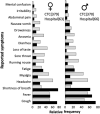Molecular testing and analysis of disease spreading during the emergence of COVID-19 in Macaé, the Brazilian National Capital of Oil
- PMID: 34635707
- PMCID: PMC8505656
- DOI: 10.1038/s41598-021-99475-7
Molecular testing and analysis of disease spreading during the emergence of COVID-19 in Macaé, the Brazilian National Capital of Oil
Abstract
The Brazilian strategy to overcome the spread of COVID-19 has been particularly criticized due to the lack of a national coordinating effort and an appropriate testing program. Here, a successful approach to control the spread of COVID-19 transmission is described by the engagement of public (university and governance) and private sectors (hospitals and oil companies) in Macaé, state of Rio de Janeiro, Brazil, a city known as the National Oil Capital. In 2020 between the 17th and 38th epidemiological week, over two percent of the 206,728 citizens were subjected to symptom analysis and RT-qPCR testing by the Federal University of Rio de Janeiro, with positive individuals being notified up to 48 h after swab collection. Geocodification and spatial cluster analysis were used to limit COVID-19 spreading in Macaé. Within the first semester after the outbreak of COVID-19 in Brazil, Macaé recorded 1.8% of fatalities associated with COVID-19 up to the 38th epidemiological week, which was at least five times lower than the state capital (10.6%). Overall, considering the successful experience of this joint effort of private and public engagement in Macaé, our data suggest that the development of a similar strategy countrywise could have contributed to a better control of the COVID-19 spread in Brazil. Quarantine decree by the local administration, comprehensive molecular testing coupled to scientific analysis of COVID-19 spreading, prevented the catastrophic consequences of the pandemic as seen in other populous cities within the state of Rio de Janeiro and elsewhere in Brazil.
© 2021. The Author(s).
Conflict of interest statement
The authors declare no competing interests.
Figures








References
-
- WHO. Coronavirus disease (COVID-19) 2020 https://www.who.int/emergencies/diseases/novel-coronavirus-2019/question... (Accessed 19 Nov 2020).
-
- Report W-W. Coronavirus disease (COVID-19) Weekly Epidemiological Update (2020).
-
- T. W. The Power of Informal Urbanism. In MCallister, M. & Sabbagh, M. editors. Perspecta 50: Urban Divides http://mitpress.mit.edu (MIT Press, 2017)
Publication types
MeSH terms
Substances
Grants and funding
LinkOut - more resources
Full Text Sources
Medical

